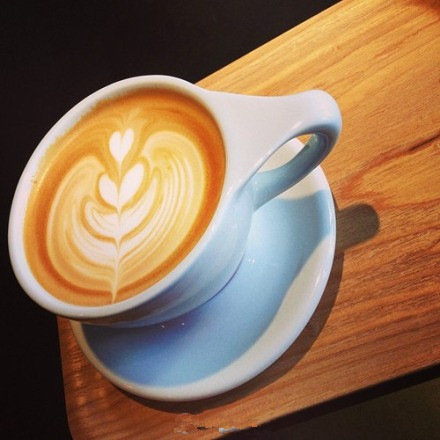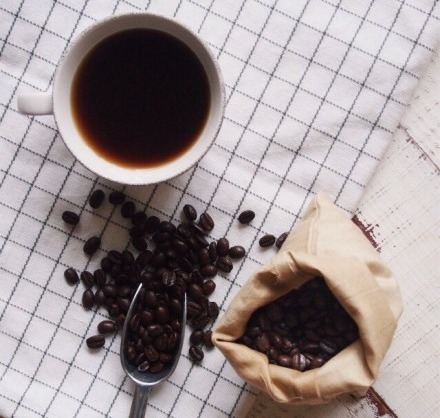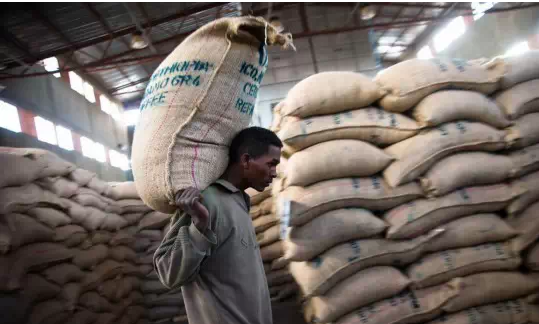Korean adults drink an average of 341 cups of coffee a year.
According to a survey by South Korea's Culture Daily, South Korean adults over the age of 20 drank 314 cups of coffee last year, an increase of 14.4 percent over the previous year, and coffee imports were close to 600 million US dollars at the same time. In the past 10 years, South Korea's coffee imports have increased by 15.3%, and the number of imports has increased by 3.6 times.

Last year, South Korea's coffee imports totaled US $594 million, with imports reaching 1.3 billion 9000 tons, up 18.3% and 16.0% respectively, according to the "Korean Coffee Import Market Analysis" and information on South Korean coffee-related industries published on the 13th by Meng Zhe-Gui, a member of the statistical research committee of the Korea Customs Trade Development Institute. With reference to the 2005 figure of US $165 million, imports have increased by 260% over the past decade. Last year, South Korean adults drank an average of 341 cups of coffee a year, an increase of 14.4% compared with the year before last. This shows that South Korea's coffee consumption has continued to grow in all aspects in recent years.
With the growing demand for coffee, coffee shops have prospered and expanded, while the number of employees has changed dramatically. The number of people working in non-alcoholic beverage stores has increased from 50, 6020 in 2006 to 130000, 4686 in 2013. The proportion of employees in the wholesale and retail industry also rose from 2.3% to 4.7%.
Affected by the distribution of coffee shops, the consumption structure of coffee in South Korea is basically consistent with the proportion of population density. According to 2013 data, 25.5% of South Korea's non-alcoholic beverage stores are in Seoul and 19.3% in Gyeonggi-do. In terms of the number of employees, Seoul was 31.2%, Gyeonggi Province 19.4%, respectively.
In addition, Vietnam was South Korea's largest importer of raw coffee beans last year, accounting for 25.8% of imported raw beans. In terms of coffee raw bean imports, the United States took the lead with 40.7%.
Important Notice :
前街咖啡 FrontStreet Coffee has moved to new addredd:
FrontStreet Coffee Address: 315,Donghua East Road,GuangZhou
Tel:020 38364473
- Prev

Hidenori Izaki barista champion visit
Name: Hidenori Izaki title: 2014 World barista Competition WBC Champion occupation: Maruyama Cafe Chief barista official website: www.maruyamacoffee.com every year, thousands of baristas from all over the world gather together to compete for the highest honor in the world barista contest WBC crown
- Next

Why do African coffee bean producing countries seldom hear about drinking coffee in Africa?
One thing I am very curious about is that coffee comes from Africa, but in many parts of Africa, especially in small towns and villages, few people drink coffee. But after a trip to Uganda's coffee-rich hometown, this question can basically be answered. There are many coffee farmers in the village of Budadiri in Mombali, a small town near the Kenyan border in Uganda.
Related
- Why can American refills for free? The difference between Americano and American drip pot coffee
- Being chased out of the rain in front of Starbucks?! Store: Sheltering from rain under umbrellas poses a safety hazard
- The white moonlight has changed?! Lucky launches "Big Winter Pear American"
- Hand-brewed coffee three-stage method, high-sweet and universal brewing method to share! What does the high sweet water level of hand-brewed coffee mean?
- What is the difference between raw, refined and full espresso coffee? How to extract espresso and taste good?
- A complete list of coffee bean names and their meanings! What is Yejia Shefi coffee? Where is Mantelin coffee?
- What grade does Arida Manor Kaduai coffee beans belong to? What treatment is Arida ASD slow anaerobic sun exposure?
- The milk tea cup becomes smaller?! Overlord Tea Girl launches a new "Return to Yunnan" series
- Accused of selling counterfeit and high-priced coffee beans! Well-known boutique coffee brand "Oukelao" bowed and apologized!
- How to make espresso dumplings? Can I eat coffee and glutinous rice balls together?

